
This parent guide supports parents in helping their child at home with the 7th grade Science content.
- Subject:
- Science
- Material Type:
- Reference Material
- Vocabulary
- Author:
- Kelly Rawlston
- Letoria Lewis
- Date Added:
- 10/11/2022

This parent guide supports parents in helping their child at home with the 7th grade Science content.

This resource accompanies our Rethink 7th Grade Science course. It includes ideas for use, ways to support exceptional children, ways to extend learning, digital resources and tools, tips for supporting English Language Learners and students with visual and hearing impairments. There are also ideas for offline learning.

The AQ-IQ Contest for Seventh Grade Students has students creating a project on an air quality problem, looking for solutions to the problem, and creating a poster, on-line interactive, artist, or video project to educate others about the issue. Students will submit the projects and bibliographies using an on-line tool. The pest projects will be invited to a recognition ceremony and receive a prize package. Visit the AQ-IQ Landing Page for more information and resources: http://web.eenorthcarolina.org/resource/about.aspx?s=121764.0.0.37430
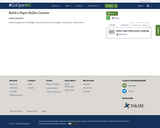
Students apply their knowledge of potential and kinetic energy to create paper rollercoasters.

Students will design a working trebuchet for maximum accuracy, distance and force using the engineering design process. Students will utilize the measurement formulas to calculate kinetic and potential energy and therefore create a trebuchet for a specific function (ex: hitting a target, knocking down a wall or launching for distance).
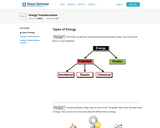
This interactive resource is a compilation of text and other elements that serves as a multimedia learning experience for students. The resource provides explanations and examples of energy transformations.
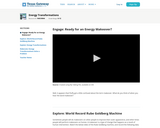
This resource is a compilation of text, videos, and other elements to create a scaffolded 5E learning experience for students. The resource provides explanations and examples of energy transformations.

In this STEM lesson, students will use a pattern to design and build a robotic rover with cardboard and a balloon. They will investigate the engineering challenges of wheels, speed, and friction while they examine the concept of a prototype in engineering. Students will demonstrate the use of potential and kinetic energy and explain ways the rover can be used in space travel and exploration.

In this lesson, students will investigate motion through a variety of activities in order to odentify changes in position and direction and the speed of an object. Students will also graph changes in motion.
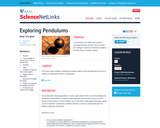
Students explore the relationship between gravitational forces and the mass of objects, the changes in speed and direction of objects, and the distance between objects.

With this resource, students will read about potential and kinetic energy and answer questions.
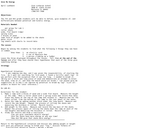
Students will define, give examples of, and differentiate between potential and kinetic energy.
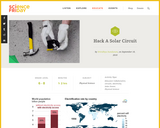
This 1-2 hour activity was developed by Science Friday educator collaborative for middle school science. Students will "reverse-engineer a solar circuit to build a simple, inexpensive, and lightweight device that is powered by the sun’s light...in order to...integrate their circuit into a moveable origami structure so that the movement of the origami serves as the switch to the circuit."
Simple dollar store solar stake lights can be used for the disassembly which can be demonstrated by the teacher or completed in small groups. By reverse engineering the solar light, students explore the components and how they work together. The second activity has them sketching and explaining what they discovered.
Resources are included that explain solar cells and circuits more in depth (including a text webpage from American Chemical Society, a video from SciToons on YouTube, and an online circuit simulation from PhET, among other choices for your class' needs).
The student engineering "notebook" and rubric are downloadable in Powerpoint and Word form, not just pdf.

Students learn the fundamental parts of a windmill, how different rotor designs affect performance, and how energy is transferred from wind into usable mechanical energy. Students will use the engineering design process and the scientific method to design, build, test, and improve their models.
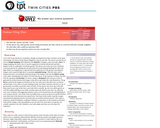
Students view a video and participate in discussion to explain the phsyics behind bungee attractions such as the ejector seat ride.

In this lesson, students will investigate and model how the various forms of energy are transferred into other forms of energy.

In this lesson, students are introduced to energy transfer and tansformation by examining examples and then building their own Rube Goldberg machine.

In this lesson, students learn how wind energy i transformed to mechanical energy using windmills to capture the wind.

In this lesson, students learn how energy from water is transformed to mechanical energy using water wheels to move the water.

In this lesson, students demonstrates that stored energy in a peanut transforms to heat energy when combusted.